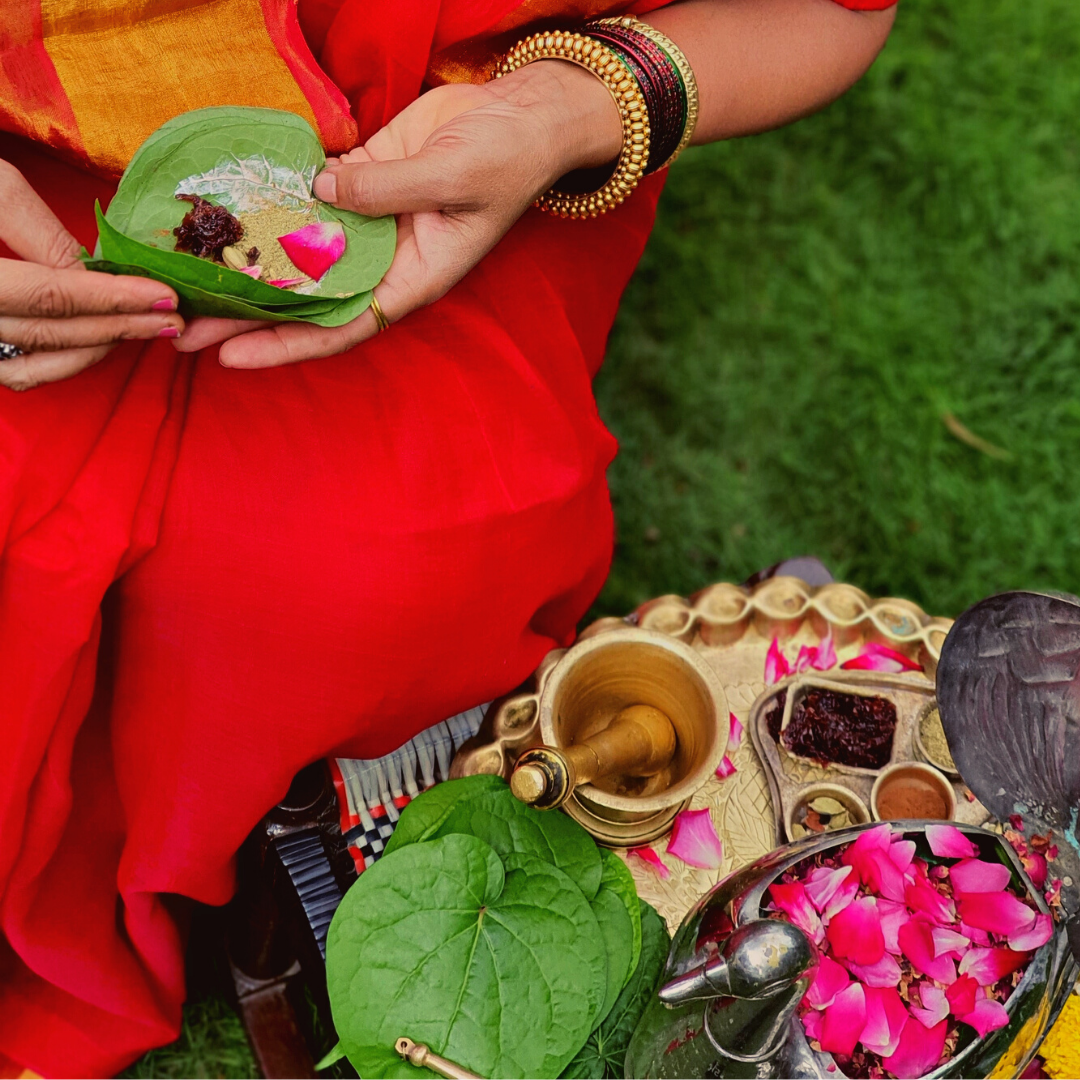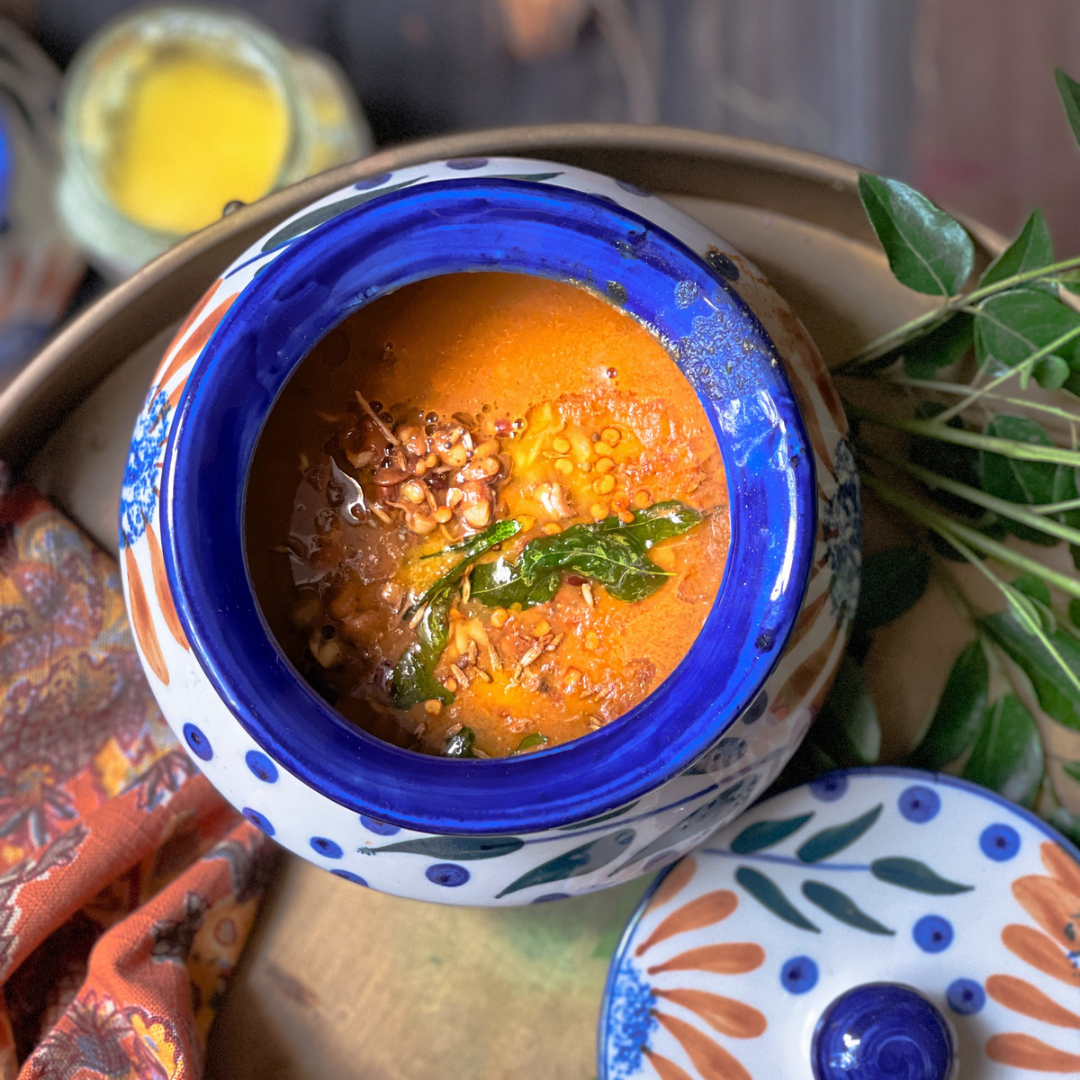This year we bring you a special series #NavaratriWithTBOF - one that is festive and colourful and a 'Culinary Celebration' of the colours of these 9 days of Navaratri! We will bring you ONE DELICIOUS RECIPE every day for these 9 days that will be all about the festive colour for that day.
In India we celebrate 9 forms of the Divine Mother through these 9 days and each day is assigned a colour each year.
#NavaratriWithTBOF - Day 4 Colour - White
Skandamata - On the 5th day of Navaratri the goddess is worshipped as the mother of Skanda or Kartikeya; She rides the lion and is seen holding her 6-headed child Skanda in his infant form on her lap.
This year we celebrate the colour White on the 5th day; a colour that is symbolic of the beauty, purity and innocence of a mother’s love for her child. It is believed that by worshipping Skandamata, devotees receive blessings not just from her, but also her beloved son Kartikeya!
We could not help but think of the gorgeous traditional Bengali white saris when visualizing the Goddess in the pristine white colour that we celebrate today!
Written by Shanthini Rajkumar
When one thinks of Bengal there are so many wonderful images which come to mind. Do we have the movies to thank for that? From grand mansions, lovingly cared for to the quintessential love for literature, poetry and the written word, the Bengali is known to have a penchant for the aesthetic way of living life.
Their food too is romanticized in many ways. They are traditional rice eaters and no meal would be complete, in a traditional Bengali household, without a steaming platter of rice. Their love for sweets is as famous as their taste in refined living. Clad in crisp whit dhotis and starched Dhaka sarees , the Bengalis with their stylish gait, buttoned collar, bunch of keys knotted into the saree pallu and sensible footwear, to walk over the monsoon puddles, have an aura of intelligence exuding from their persona. Even the umbrellas and the vintage wooden stands which house them at the entrance way have a story to tell.
A well run Bengali home does have a lot to do with the feast that is set on the table. The wooden frame bears the weight of delicious aloo poshto, seasonal bata to spice up the meal, lucchi and of course the famous mishti doi. The sweet tooth does show up even when inventing savoury dishes. A perfect example is the Ghee Bhat or Misti Pulao.

A pulao is a lighter version ,if one can call it that, of a biryani. There is no grinding of spice pastes or masalas and the spices are used whole to add a perfumed hint of aromatic notes to the grains of rice.
Just like how each region of India is known for its heritage rices, in Bengal, the Gobindo Bhog is said to be most favoured of the local rice varieties. This short grained fragrant rice has infused many a dinner table with its intoxicating aroma, calling out to the hungry gut to savour some more.
The hospitality shown to a guest in a Bengali household is indeed through food and drink. Among interesting conversations ranging from cricket and the tram lines to the performing arts, the platters of food are a constant reminder that one can remove the foodie from Bengal but never Bengal from the foodie. The panch phoran is clutched like treasure and travels across seas to far away lands adding a memory of the home which lingers in the daily thoughts.
When the longing threatens to overpower into an unimaginable home sickness the only savior is to pull out the pots and pans and cook up a plate of steaming rice with a side that compliments but never overpowers. The ghee rice contains ingredients which are available easily across the world. In the absence of the heritage Gobinda Bhog rice, you could use the TBOF Krishna Kamod also known as the Basmati of Gujarat.

The traditional way of cooking is in a heavy bottomed vessel in which the cashew nuts and raisins are first roasted and plumped up in ghee and set aside while the spices are tossed to draw out their inherent oils and fragrances. Bits and pieces of vegetables like carrots, beans and peas are added; sometimes more, sometimes less and it is all brought together with a seasoning of salt and of course a pinch of sugar. A savoury rice with sweet notes is not uncommon to the Indian palate but not everyone might enjoy it.
That’s another reason why a Bengali meal is balanced with different tastes ranging from bitter, sour, sweet, spicy and salty. Roasted papads and lightly sauteed bitter gourd are a part of the accompaniments placed around the ghee bhat. It is designed in a manner which whets the appetite at the start and satiates the hunger pangs at the end. It is fascinating to learn the science behind our traditional meal pairings.
What is so endearing about this ghee bhat is that it is comforting and simple enough for a quiet family meal and just as grand enough to serve for a special occasion. As they say “It’s all in the ghee “

Recipe for Bengali Ghee Bhat
Gobinda bhog rice? Basmati rice - 2C
Water for cooking -as required (2C if using pressure cooker)
Cardamom-3
Cloves-2
Cinnamon-1
Carrot-100 gms cut into sticks
Beans-100 gms cut into long pieces
Cashew nuts- 25 gms
Raisins-15 gms
Ghee- 5-6 Tbsp
Green chillies- to taste
Salt to taste
Sugar-1/2 tsp
Method
Pressure cooker method
Soak the rice for 15 minutes
Wash thoroughly and set aside.
In a pressure cooker, add the ghee and set on low heat
When the ghee is warm, add the raisins and cashew nuts. Let the raisins swell up and the cashew nuts turn golden.
Turn off the flame. Remove the raisins and nuts and set aside in a small cup
Put the cooker back on heat.
To the same ghee, add the whole spices; cardamom, cinnamon and cloves. Add the green chillies.
Then add the carrots and beans and saute’ well for a few minutes
Add the drained rice and mix well until it is coated in the ghee, spices and vegetables.
Add the water and mix gently. Add salt and let it come to a boil.
Add the sugar (optional)
Close the lid and allow for 1 whistle.
Take it off the heat and let the pressure come down gradually.
When cool ,open the lid and check if rice is cooked.
Fluff up the grains using a thin prong or fork.
Serve garnished with the fried raisins and cashew nuts.
Handi method
Take a medium to large sized earthenware pot and add enough water.
Set it on heat and wait for it to come to a boil
Add the washed and drained rice and cook until soft. Drain and use the water as starch or for the plants.
Set the cooked rice aside.
Wipe the handi and add the ghee.
Set it on the fire.
When the ghee melts,add the cashew nuts and raisins.
Let the raisins swell up and the cashew nuts turn golden.
Turn off the flame. Remove the raisins and nuts and set aside in a small cup
Put the cooker back on heat.
To the same ghee, add the whole spices; cardamom, cinnamon and cloves. Add the green chillies.
Then add the carrots and beans and saute’ well for a few minutes
Add salt and saute until the vegetables are soft.
Add sugar (optional)
Mix well and check seasoning.
Turn off the flame and let it cool a bit.
Gently mix in the cooked rice ,taking care not to break the grains while mixing.
Before serving garnish with the fried cashew nuts and raisins.










